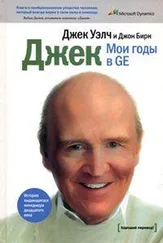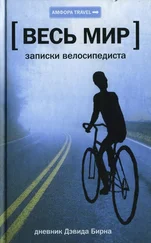Ultimately, Jacobs realized that invisible forces—laws that govern mortgage payments, house loans, and, of course, zoning—could create, enliven, preserve, or eviscerate a neighborhood. Black urban American neighborhoods never had a chance, as hard as their citizens worked—since home lending laws were stacked against them. These arcane laws have huge and visible effects. The Garment District—where I live now—is going through a radical transformation as a result of legal changes of this latter type. About five years ago it was forbidden to build big apartment buildings and condos around there. The point was to preserve the light-manufacturing base that makes the Garment District work as a creative and vibrant manufacturing area—at least in the daytime.
The area developed over decades to be a home to light manufacturers, fashion designers, button and zipper wholesalers, pattern cutters, fabric wholesalers, and other small trades that feed the needs of the garment and fashion industries. If a designer needed a pattern cut or wanted to use a weird type of button, well, most likely it was made and would be available within a couple of blocks, so creative needs and impulses went hand in hand with the flourishing of these small businesses. It was all pretty efficient. In an effort to protect this synergy, laws limited who could build, own, or rent in this area. Someone realized that all these businesses worked because they existed in proximity to one another. They couldn’t exist in isolation. You can’t e-mail a button. Density is critical.
When real estate values skyrocketed (this was before the recent mortgage/credit crisis) developers began eyeing the area. Not surprisingly it was eventually rezoned so that residential buildings could be planned, built, and rented. The inevitable result is that the small garment industries are getting pushed out. Some of the garment business had already moved to New Jersey or offshore. When the density declines to a certain level it will no longer function.
I’m not saying this is all bad. Possibly the fact that this area had developed into a single-use neighborhood helped make it so nefarious and dangerous at night. Hell’s Kitchen. Until recently the west side of my neighborhood was notorious for junkies and hookers, mainly transvestites. (The poor transvestites are always getting shoved from one neglected zone to another.)
Now there are towering condos going up on every block. The neighborhood has become safer, but sadly other little businesses are leaving as well—one by one. There were two fishmongers nearby on Ninth Avenue until a few months ago. Now there’s just one. There were still two butcher shops until recently, but one of those has just closed. The fruit and vegetable market run by a Latino family closed last year and another Thai restaurant took its place. There are now three Thai restaurants in a two-block area.
I suspect that many of these changes—not all of them for the worse in the case of my area—are mainly the result of those legal and zoning changes, invisible top-down decisions that over time have sweeping effects. We’re not even aware of some of them unless we attend local meetings, so it’s a little hard to see how they are going to affect the city. But many of us instinctively recognize the things that are worth fighting for and when we see them getting wiped out then we react—hoping it’s not too late.
So, though I didn’t plan to, I’ve become a bit of an advocate. I agree with Jan Gehl: Though I ride on them, the New York streets are not ready this year for everyone to deal with, not just yet. New York shouldn’t be flooded with cyclists overnight. My recommendations to friends of where to ride in New York are limited to the streets, parks, and promenades where it does work. And there are more and more of them.
I’m in my midfifties, so I can testify that biking as a way of getting around is not something only for the young and energetic. You don’t really need the spandex, and unless you want it to be, biking is not necessarily all that strenuous. It’s the liberating feeling—the physical and psychological sensation—that is more persuasive than any practical argument. Seeing things from a point of view that is close enough to pedestrians, vendors, and storefronts combined with getting around in a way that doesn’t feel completely divorced from the life that occurs on the streets is pure pleasure.
Observing and engaging in a city’s life—even for a reticent and often shy person like me—is one of life’s great joys. Being a social creature—it is part of what it means to be human.
Appendix
Security Tips
Hal from Bicycle Habitat demonstrated for an audience at Town Hall how easy it is to cut a cable (five seconds) or saw through a U-lock (a minute) or break a chain with a grinder (four minutes). Who carries grinders with them and where would they plug them in, you might ask? It happens. Not as much as it used to, but it does. Hal’s advice is to use as much security (more than one type of lock if possible, then they’ll have to have multiple tools) as you can bear and ride as crappy a bike as you can—if you’re going to lock it up outside.
I think he’s right, but maybe two locks is a little extreme. I got some security bolts recently that require specific tools to unscrew. The bolts replace the wheel quick releases and the seat release and they seem to work—neither my wheels nor my seat have been stolen in a while. A few companies make these. You get a special key-type thing and the bolts are really hard to undo without the key. The drawback is if you need to take your wheel off for repairs, well, you need to have the key with you.
As far as locks go, one bike store here recommends a stubby U-lock as opposed to the long ones, as they say it’s hard to get a pipe in the tiny gap left by the short ones to leverage and break the lock. That’s working pretty well so far.
Maintenance
I once got a really good bike, with expensive gears and brakes—the whole deal. But keeping it in tune and running smoothly was such a never-ending process that when it was eventually stolen (actually only the front half was stolen) I didn’t bother to replace it. It was like a purebred animal: it needed constant care and was very finicky. If you’re a foreign sports car guy who loves tinkering in the garage, then you’ll love those high-end bikes.
Helmets and Clothing
Helmets are notoriously uncool-looking. I’ve tried different things as helmets. English riding helmets seem pretty safe (lots of Styrofoam padding) and they are very stylish (they’re velvet covered and have a satin bow in the back!) but they have zero ventilation. God knows what those ladies’ and gentlemen’s hair looks like when they get back from the hunt! Ewww.
I tried a (baseball) batter’s helmet once too—that covers one ear (the ear facing the pitcher). They stay on without a strap (by hugging your head tightly), which works for batters, as they toss them off after three minutes at the plate, but riding in one for even a short while gave me a splitting headache.
I tried decorating my helmets too. One year I saw a Puerto Rican man selling raccoon tails out of a shopping cart. I bought one and tied it to the back of my helmet. Davy Crockett! King of the Wild Frontier! That helmet got stolen really quickly.
In the winter and on cold days I wear a skateboard helmet. They cover a lot of your head and they don’t have holes in them so they’re warm. When the weather gets milder I wear a more expensive racing model with a lot of holes in it, which doesn’t prevent helmet hair, but allows my scalp to breathe a little. My friend C just got a collapsible helmet in Japan—leather strips filled with tough cushion material that flattens out when it’s not on your head.
Читать дальше









